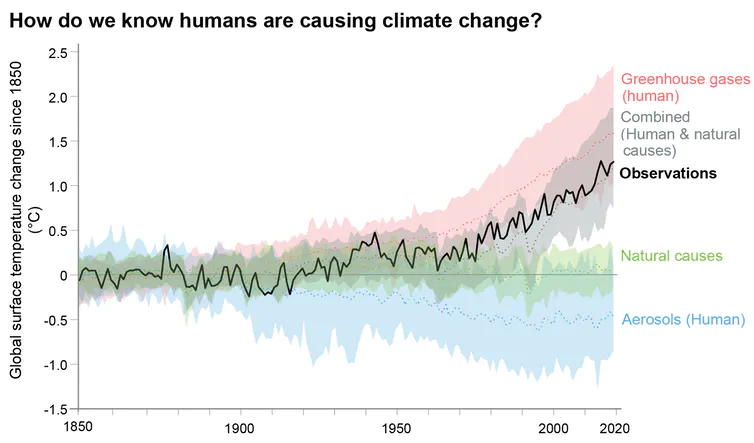EDEN BLOGS
NEWS IMPULSE | IPCC REPORT| 12th AUGUST 2021
IPCC REPORT
Syllabus Section: Environment and Ecology (GS Paper III)
Importance: UPSC Prelims and UPSC Mains
Why in News?
- Recently, IPCC has released its sixth Assessment Report, which warns against unabated global warming
- So far, five assessment reports have been produced, the first one was released in 1990. The 5th assessment report was released in 2014, in the run-up to the climate change conference in Paris.
About:
KEY TAKE-OUTS
- Rise in Temperature:
- Global surface temperature was 1.09°C higher over the last decade (2011-2020) than the 1850-1900 average.
- Larger increases have been felt over land (1.59°C).
- The report said that average surface temperature of the Earth will cross 1.5 °c over pre-industrial levels in the next 20 years (By 2040) and 2°C by the middle of the century without sharp reduction of emissions.
- This is the first time that the IPCC has said that the 1.5 degree warming was inevitable even in the best case scenario.
- Carbon Dioxide Concentration:
- Current atmospheric concentrations of carbon dioxide (CO2) are higher than at any time in the last two million years
- The report has provided an updated estimate of the carbon budget (maximum amount of carbon)that can be emitted while still having a chance to limit warming to 1.5°C or 2°C.
- According to it the world can emit only about 500 gigatons of carbon dioxide (GtCO2) starting January 1, 2020 for a 50 per cent chance of limiting warming to 1.5°C.
- The concentrations of lethal air pollutants such as sulphur dioxide (SO2), nitrogen dioxide (NO2), ammonia (NH3), ozone (O3) and Particulate Matter2.5 are at their highest in south Asia.
- Climate Change and Its Impact:
- Global sea level
- It has been rising at an accelerating rate since about 1970 and over the last century,
- Over the last decade, global average sea level has risen at a rate of about 4 millimetres per year (1.5 inches per decade).
- Sea-level rise has tripled compared with 1901-1971. The Arctic Sea ice is the lowest it has been in 1,000 years.
- This increase is due to two main factors:
- the melting of ice in mountain glaciers and at the poles
- expansion of water in the ocean as it takes up heat.
- Impact: Sea level rise is leading to substantial impacts on coastal communities, including a near-doubling in the frequency of coastal flooding since the 1960s in many sites around the world.
- Heatwaves
- It is virtually certain that heatwaves have become more frequent and more intense since 1950, with human-induced climate change the dominant driver
- Compared to AR5, this has increased from “likely” to “virtually certain”.
- Marine heatwaves
- Marine heatwaves have become more frequent since the 20th century
- Precipitation & Drought:
- Every additional 0.5 °C of warming will increase hot extremes, extreme precipitation and drought. Additional warming will also weaken the Earth’s carbon sinks present in plants, soils, and the ocean.
- Snow Cover:
- There has been a 40 percent decrease in Arctic Sea ice since 1979.
- Snow-covered areas and snow volumes will decrease during the 21st century, snowline elevations will rise and glacier mass is likely to decline with greater mass loss in higher greenhouse gas emission scenarios.
- Rising temperatures and precipitation can increase the occurrence of glacial lake outburst floods and landslides over moraine-dammed lakes.
- Mountain glaciers will continue to shrink and permafrost to thaw in all regions where they are present.
- Cyclones
- It is likely that the proportion of cyclones that become extremely destructive (reaching category 3-5 strength) has increased.
Intergovernmental Panel on Climate Change:
- The Intergovernmental Panel on Climate Change was established in 1988 by the World Meteorological Organization (WMO) and United Nations Environment Programme (UNEP).
- IPCC assessments provide a scientific basis for governments at all levels to develop climate related policies, and they underlie negotiations at the UN Climate Conference – the United Nations Framework Convention on Climate Change (UNFCCC)
- It is an essential component of the world’s response to climate change.
Assessment Reports:
- It’s Assessment Reports – published every five to eight years – have been a driving force for action, heavily influencing international agreements.
- The Sixth Assessment Report is divided into three main parts, which are the contributions from the IPCC’s three working groups.
a) Working Group, I: assesses the physical scientific basis of climate change. Among other things it covers humans’ influence on the climate system, extreme weather, and the current and future state of our climate.
b) Working Group II: assesses the vulnerability of societies and ecosystems to climate change and options for adapting to its impacts.
c) Working Group III: focuses on climate change mitigation.
The contributions from Working Groups II and III will be published in 2022
Source: Down To Earth



{{doubts.user.firstName}}
{{doubts.createdAt | formatDate}}